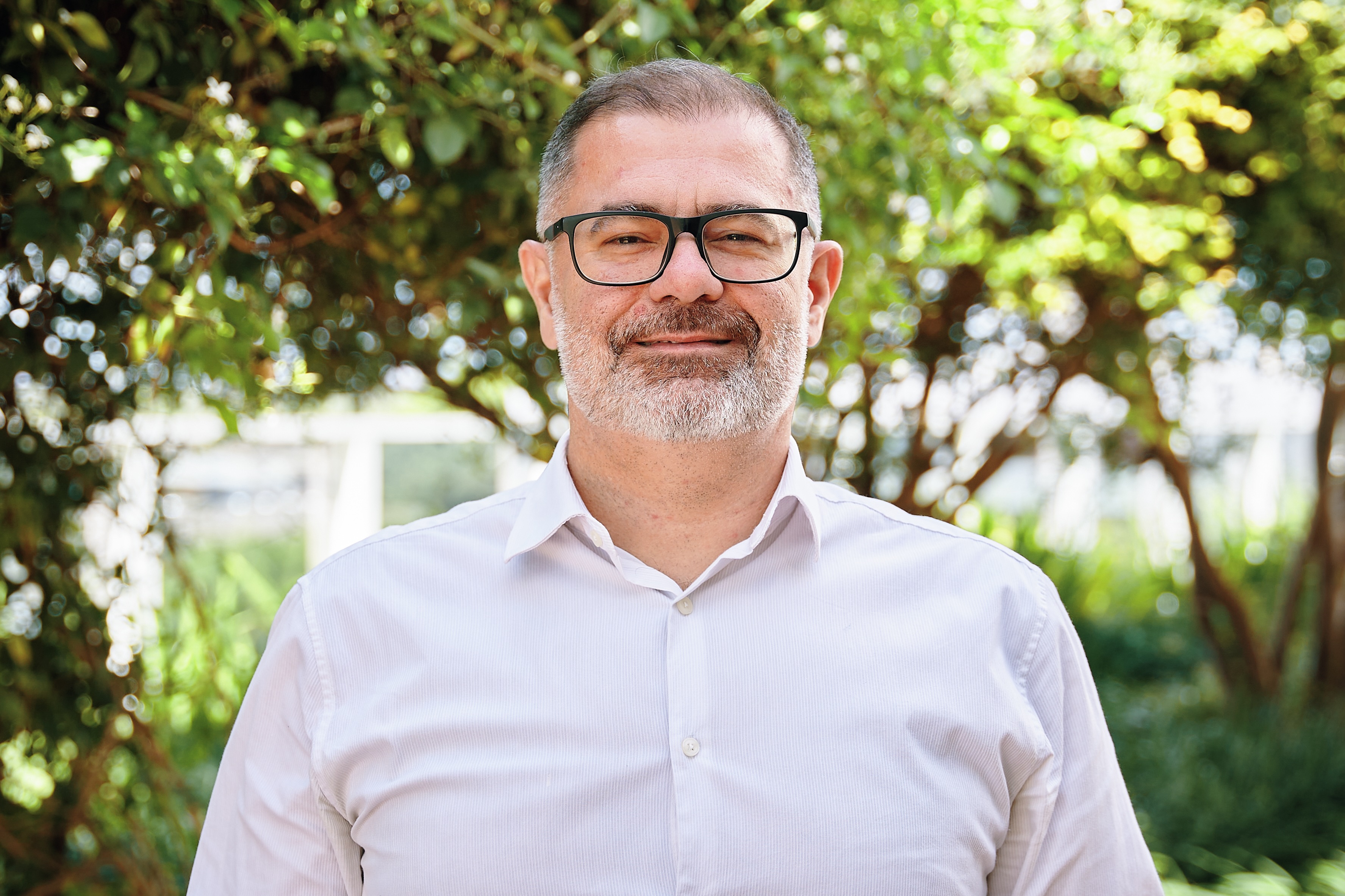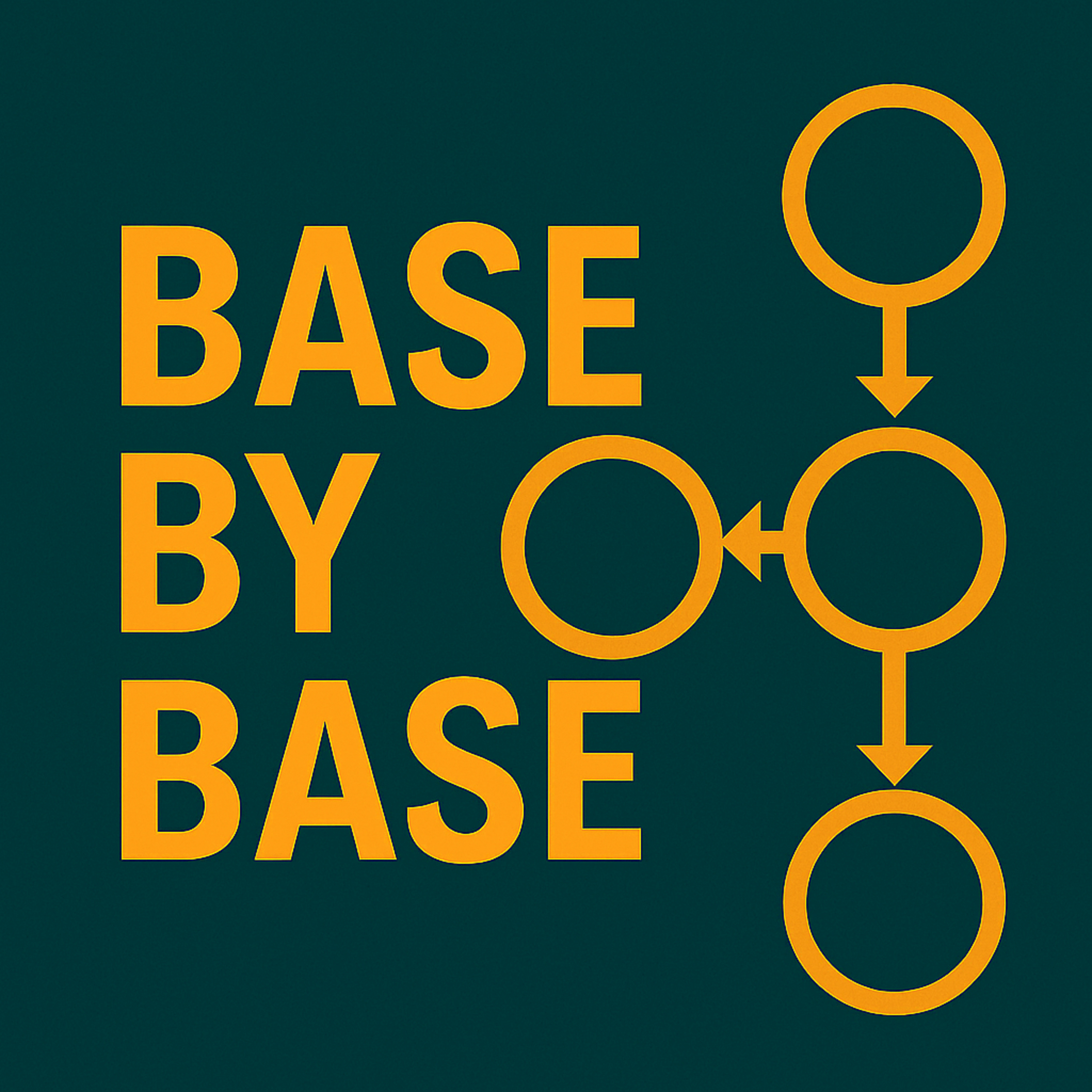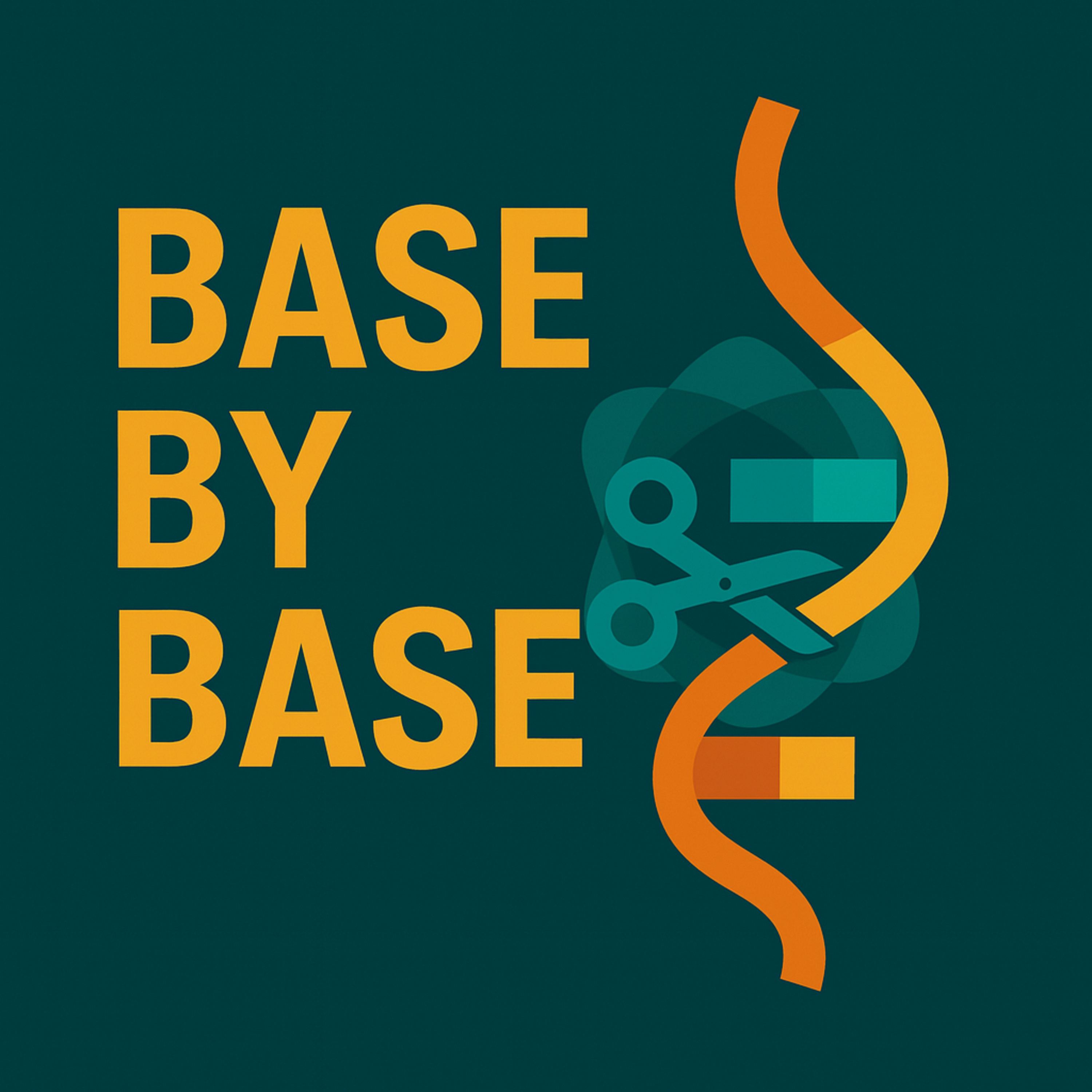Episode Transcript
[00:00:00] Speaker A: Foreign.
[00:00:14] Speaker B: Welcome to Base by Bass, the papercast that brings genomics to you wherever you are. Thanks for listening and don't forget to follow and rate us in your podcast app. So let's start today by talking about scale. I mean, the sheer scale of human suffering caused by genetic disease. We're Talking about over 8,000 distinct diseases.
[00:00:34] Speaker C: Affecting hundreds of millions of people globally. It's just a staggering number.
[00:00:38] Speaker B: And if you're trying to treat these conditions with the incredible gene editing tools we have now, you.
You immediately run into a logistical wall.
[00:00:46] Speaker C: You do. Current tools, whether it's crispr nucleuses or prime editors, are mostly allele specific.
[00:00:53] Speaker B: And that's the crux of the problem. If you look at a database like Clinvar, you see over 200,000 known pathogenic mutations.
[00:01:00] Speaker C: Right.
[00:01:00] Speaker B: So if every single one of those needs its own unique bespoke, therapeutic one mutation, one drug model, the system just collapses.
[00:01:08] Speaker C: It's clinically, financially, and logistically impossible. You just can't develop and regulate thousands of different products.
[00:01:14] Speaker B: It forces you to ask a different question.
[00:01:16] Speaker C: Is there another way?
Can we maybe move beyond correcting a single base pair and instead correct an entire class of disease?
[00:01:25] Speaker B: So that brings us to the core mission of this deep dive. What if we could design one therapeutic agent, a single composition of matter that could potentially treat thousands of different diseases.
[00:01:36] Speaker C: Caused by completely different mutations in different genes?
[00:01:38] Speaker B: And what if that treatment was a single permanent fix? This is where it gets really interesting. Moving from targeted correction to, well, generalized suppression.
[00:01:47] Speaker C: And making that vision a reality required some intense innovation.
So today we're celebrating the work led by Sarah E. Pierce, Stephen Irwood and David R. Liu, along with their colleagues at the Merkin Institute of Transformative Technologies in Healthcare and Abroad, Institute of Harvard and mit.
[00:02:03] Speaker B: They really advanced our understanding of this kind of disease. Agnostic genome editing.
[00:02:08] Speaker C: You certainly did.
[00:02:09] Speaker B: Okay, let's unpack this. We should probably start by defining the target. They focused on a massive class of mutations. Nonsense mutations.
[00:02:16] Speaker C: Right. Which create what are called premature, premature termination codons or PTCs.
[00:02:20] Speaker B: And just how big is this group?
[00:02:22] Speaker C: It's huge. We're Talking about roughly 24% of all pathogenic alleles listed in the Clinvar database.
[00:02:29] Speaker B: Yeah.
[00:02:30] Speaker C: In molecular terms, a PTC is basically a typo in the DNA that tells the ribosome to stop reading way too early.
[00:02:37] Speaker B: A premature stop sign.
[00:02:39] Speaker C: Exactly. The ribosome stops translation and you end up with this truncated, usually non functional protein that gets degraded, which leads directly.
[00:02:46] Speaker B: To these loss of function diseases.
[00:02:48] Speaker C: Right.
[00:02:49] Speaker B: So the therapeutic goal seems simple on the surface. Just find a way to make the ribosome blow past that premature stop sign. How do you do that?
[00:02:57] Speaker C: The central idea involves using something called suppressor TRNAs or sub TRNAs. Okay. These are custom engineered transfer RNAs. So normally a stop codon attracts a releasing factor that, you know, stops the whole process. But a well designed subprna has an anticodon that matches the ptc.
[00:03:14] Speaker B: So it can essentially beat the releasing factor to the punch.
[00:03:17] Speaker C: It gets there first. So instead of translation stopping, the sub TRNA slips in, it inserts an amino acid, and the ribosome just keeps on going.
[00:03:24] Speaker B: And you get a full length functional protein.
[00:03:26] Speaker C: That's the concept.
But the road to making this clinically viable has been, well, a bit rocky. Previous attempts using AAVs or lipid nanoparticles hit two major roadblocks.
[00:03:38] Speaker B: What were those limitations? Why did they stall this kind of therapy before?
[00:03:41] Speaker C: The first problem was durability, because those treatments are transient. They require lifelong administration to keep protein levels up.
[00:03:50] Speaker B: And with AAVs, you can't really do repeat dosing.
[00:03:52] Speaker C: No, because the patient develops neutralizing antibodies, you pretty much get one shot.
[00:03:57] Speaker B: Okay, so that's the first roadblock. What was the second?
[00:03:59] Speaker C: Potency and toxicity. Historically, these engineered sub trnas just weren't very efficient.
So to get a therapeutic effect, you had to flood the cell with massive amounts of overexpression, a toxic level of overexpression. And that can dangerously perturb global translation, leading to all sorts of potential side effects.
[00:04:17] Speaker B: So the mission was find a way to permanently express the supp tRNA, but at low endogenous levels to avoid all that toxicity.
[00:04:26] Speaker C: Exactly. And that brings us to their new strategy, which they call peer prime editing.
[00:04:31] Speaker B: Mediated read through of premature termination codons.
[00:04:34] Speaker C: And this is the pivotal shift they realized trying to correct the actual disease mutation is an allele specific dead end.
[00:04:42] Speaker B: So instead.
[00:04:43] Speaker C: Instead, they correct the genome of the cell itself by permanently installing their optimized sub tRNA.
[00:04:49] Speaker B: And our listeners will know prime editing is like a search and replace tool for DNA. How did they apply it here in the world of TRNAs?
[00:04:56] Speaker C: They used it to convert a dispensable endogenous human TRNA gene into their optimized sub TRNA. So they're not adding some new unregulated gene. They're subtly upgrading an existing one at.
[00:05:07] Speaker B: A single genomic locus.
[00:05:09] Speaker C: A single locus. And that harnesses the cell's natural machinery to ensure the expression is permanent, it's regulated and it's not overexpressed.
[00:05:17] Speaker B: The Engineering here is just fascinating to me. They didn't just pick a TRNA and change its anticodon. Right. They had to run this massive optimization campaign to make sure that one single copy was potent enough to actually work.
[00:05:30] Speaker C: Oh, it was incredibly rigorous. They started by screening, what was it, tens of thousands of variants from all 418 human TRNAs. All of them? All of them. Just to find the best possible chassis. The one with the highest baseline activity as a suppressor for the AmberStop codon tag.
[00:05:47] Speaker B: And which one came out on top?
[00:05:49] Speaker C: The TRNA Lutea family. It showed the highest baseline activity. But even that wasn't enough.
[00:05:55] Speaker B: Right.
[00:05:55] Speaker C: They had to iteratively tweak three specific parts of that gene to really maximize its power.
[00:06:00] Speaker B: What were those three elements?
[00:06:02] Speaker C: First, the leader sequence, the 40 base pairs right upstream of the TRNA, they found subtle changes there, could really boost expression.
[00:06:09] Speaker B: Okay.
[00:06:09] Speaker C: Second, the TRNA body itself. They used saturation mutagenesis, basically testing every possible letter swap to find beneficial single nucleotide variants.
[00:06:19] Speaker B: So when you see things in the paper like HP12 tack, those aren't random. What did those specific tweaks do?
[00:06:26] Speaker C: Precisely, they're strategic. They found those SNVs improved two key the TRNA stability and its acceptance by the ribosome.
[00:06:35] Speaker B: It turns a modest suppressor into a hyper efficient one.
[00:06:38] Speaker C: Exactly. And the third element was the terminator sequence. They found that A simple string of 5Ts, a 5T terminator, often worked better than the natural signal.
[00:06:46] Speaker B: So after all that deep optimization, they packaged it up and in human cells they getting up to 60 to 80% desired editing. That's a huge degree of permanent genomic modification.
[00:06:57] Speaker C: And that high efficiency led directly to massive disease agnostic success in their cell models. And the key thing is they used the exact same prime editor for multiple distinct diseases.
[00:07:09] Speaker B: Which diseases did they show a rescue for?
[00:07:11] Speaker C: They restored enzyme function in cell models for Batten disease, which is a TPP1 mutation, Tay Sachs a Tech SE mutation and Niemann Pick disease, an NPC1 mutation.
[00:07:22] Speaker B: And the restoration levels for the Batten.
[00:07:24] Speaker C: And Tay Sachs models, they saw anywhere from 20% to 70% of normal enzyme.
[00:07:29] Speaker B: Activity for loss of function diseases. Those aren't just good numbers, those are numbers that cross the therapeutic finish line.
[00:07:34] Speaker C: They are. Those levels are known to be well above the threshold you need to stabilize or even halt disease progression. One editor, multiple severe diseases.
[00:07:43] Speaker B: And to really drive home the breadth of this, they didn't just stop at those three models, they did a much broader validation.
[00:07:49] Speaker C: Yes, they quantified, read through across nearly 15,000, it was 14,746 distinct pathogenic PTCs from the ClinVar database.
[00:07:58] Speaker B: And the result?
[00:07:59] Speaker C: For the sequences they tested, they found an average read through score of 69%, plus or minus 30%. Which indicates this thing is highly effective against the vast majority of clinically relevant nonsense mutations.
[00:08:10] Speaker B: Okay, so the foundation is rock solid in the lab, but the true test is always a living system. What happened when they moved this into a mouse model?
[00:08:18] Speaker C: They chose a mouse model of Hurler syndrome. It's a really severe lysosomal storage disease caused by a specific premature stop codon.
[00:08:26] Speaker B: And they delivered the peer system using AAV9s into neonatal mice.
[00:08:30] Speaker C: That's right.
[00:08:31] Speaker B: Given the challenges of delivery to tissues like the brain and heart, what kind of editing efficiency did they actually get?
[00:08:37] Speaker C: In the animals, the editing efficiency was, honestly, it was pretty modest. In those key tissues, the cortex and the heart, they measured around 6% genomic editing.
[00:08:45] Speaker B: Okay.
[00:08:46] Speaker C: And this translated to a restoration of the IDUA enzyme activity of about 6.3% to 7.6%.6 or 7%.
[00:08:53] Speaker B: As a clinician, I might hear that and think, is that really enough to matter? Was that?
[00:08:57] Speaker C: And that is the most breathtaking finding of the whole study. That modest restoration was enough to achieve a nearly complete rescue of the disease pathology.
[00:09:06] Speaker B: Wow.
[00:09:07] Speaker C: In the mice, they saw a resolution of the severe cellular damage, including the cerebellar purkinje cell vacuization, which is critical for neurological function. They also saw a JAG accumulation in the liver and spleen just depleted.
[00:09:22] Speaker B: Hold on. A permanent 6% correction in the cells led to a nearly complete reversal of the pathology.
[00:09:28] Speaker C: Correct. And the clinical implication there is just enormous. It suggests that even a small, durable, regulated improvement in protein function could be enough to dramatically reverse disease phenotypes. It completely changes the therapeutic goalposts.
[00:09:42] Speaker B: So what does this all mean then? The marriage of durable genome editing with the generalized applicability of C TRNAs. It seems like a massive step forward.
[00:09:50] Speaker C: It is a breakthrough, but we have to immediately talk about safety.
The major historical concern with any of these therapies is unintended read through of natural termination codons or NTCs.
[00:10:01] Speaker B: Right. If you start reading through the real stop signs at the end of genes, you get these elongated, misfolded, potentially toxic proteins.
[00:10:09] Speaker C: It's a massive risk. So how rigorously did they check for that?
[00:10:12] Speaker B: How did they.
[00:10:13] Speaker C: Extremely. They performed proteome wide mass spectrometry on both the human cells and the treated mouse tissues, and the result was A resounding success. They found no detected read through of NTC's.
[00:10:26] Speaker B: And why do you think this strategy, installing it at an endogenous locus avoided that problem that plagued all the earlier approaches?
[00:10:34] Speaker C: It all comes down to regulation. The earlier methods created these hyper elevated supraphysiological levels of the suppressor. When you flood the system, you increase the chance of overriding a natural stop sign. But here, by just installing one optimized copy at an endogenous locus, the cell regulates its expression perfectly. It maintains homeostasis and they confirm this. No significant changes in the transcriptome or global TRNA levels.
[00:10:59] Speaker B: It's a surgical upgrade that addresses the biggest concern beautifully. But no study is perfect. What are the limitations? They identified the immediate challenges for perc.
[00:11:10] Speaker C: The primary limitation they found was related to the target.
They couldn't identify an effective SEPTRNA for the TAA stopped codon. TAA is known to be the most stringent stop codon. It's just really resistant to read through.
[00:11:22] Speaker B: Okay.
[00:11:23] Speaker C: Also, while the approach is disease agnostic, the efficiency still depends a bit on the sequence context right around the PTC. So it's not quite 100% universal yet.
[00:11:32] Speaker B: And the most practical hurdle for actually getting this into the clinic delivery.
[00:11:35] Speaker C: It's always delivering that 6% editing in the mouse brain, while effective for Hurler syndrome, won't be high enough for diseases that need near total correction. Future work has to focus on better tissue targeted delivery, probably through new viral capsids.
[00:11:48] Speaker B: But it really changes the paradigm. Instead of designing a drug for one patient's specific mutation in say, cftr, you're designing one drug for all patients with cystic fibrosis from a nonsense mutation. The implications for diseases like Stargard or Duchenne are just immense.
[00:12:05] Speaker C: The central insight here is this successful marriage of prime editing and suppressor TRNA technology.
PRT is a disease agnostic strategy that permanently installs an optimized suppressor TRNA at an endogenous locus. This single composition of matter rescued enzyme function across multiple cell models and critically achieved near complete pathology rescue in a living mouse, offering a path toward a durable one time treatment for a huge range of disorders.
[00:12:29] Speaker B: So gophen that PERT could potentially address thousands of distinct pathogenic mutations with a single drug. What regulatory or manufacturing bottlenecks need to be dismantled first to truly maximize the benefit of this approach for patients globally? That is something for you to think about. This episode was based on an Open Access article. Under the CC BY 4.0 license. You can find a direct link to the paper and the license in our episode description. If you enjoyed this, follow or subscribe in your podcast app and leave a five star rating. If you'd like to support our work, use the donation link in the description Now. Stay with us for an original track created especially for this episode and inspired by the article you've just heard about.
Thanks for listening and join us next time as we explore more science based by way.
[00:13:21] Speaker A: Sat through the lab glass late at night.
Screens of letters tiny storms of A and C and G and Y.
Every broken line of codings in the same red light.
Little stop signs in the genome freezing someone's life what if one small curve of RNA could turn all those endings into stays One coat for many scars Turning stop signs in the the stars stars when the prime light writes a new line Lost enzymes find their way back home One cone for many scars Let the song and a carry on.
From a cell dish full of stories bat nyes and CF longs, Hurla bones and fading neurons waiting for another song Flip a native strand in place Let the amber word be red subpar and ale in the circuits pulling futures from the Edge 1 code for many stars Turning stop signs into stars Every nonsense would rewritten till the silence jeans can speak once more One code for many stars across the night of broken forms.
Sam.




